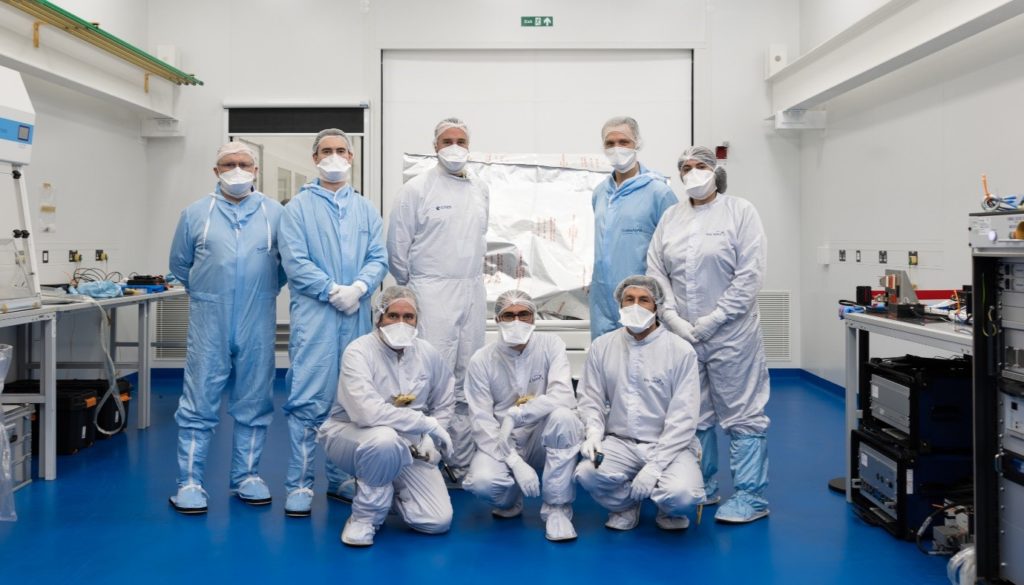
Microcarb arrives at Harwell Campus ahead of 2024 mission
Microcarb, a joint British and French satellite dedicated to monitoring atmospheric carbon dioxide, has arrived at STFC RAL Space where its building and testing will be completed by Thales Alenia Space.
Due to launch in 2024 from French Guyana, Microcarb is a collaboration between the UK Space Agency (UKSA) and the French space agency, CNES, and will be the first European satellite dedicated to measuring atmospheric CO2 from all around the world.
The instrument was built by Airbus France before being shipped to the UK, where Thales Alenia Space will complete the assembly, integration and testing at RAL Space’s facilities.

Once in space, the satellite will monitor Earth’s atmospheric CO2 with extreme precision and detect the changes in surface emissions and uptake from the world’s cities, forests and oceans.
An important feature of the satellite is its special city-scanning ‘observing mode’ that will allow scientists to map the CO2 distribution across cities, which are responsible for the majority of global emissions.
RAL Space designed and built Microcarb’s Pointing and Calibration System (PCS), which feeds the light reflected from Earth into the instrument. The PCS will allow the instrument to point at specific targets on the ground, such as cities, to take local measurements of carbon dioxide emissions from urban areas.
Data from MicroCarb will help monitor international progress in meeting the Paris Agreement climate target of limiting global surface warming to well below 2ºC of pre-industrial temperatures.

Dr Sarah Beardsley, Director of STFC RAL Space, said: “Achieving Net Zero is one of the most pressing challenges we currently face, and a vital part in reaching our collective goal is to develop systems that can accurately and reliably monitor carbon emissions.
“I’m incredibly proud that STFC RAL Space has played such an important role in the development of MicroCarb. The pointing and calibration system that we’ve developed for this mission will enable scientists to analyse the carbon cycle in new levels of fine detail, giving us a fuller and clearer understanding of the processes driving climate change.”
Dr Paul Bate, Chief Executive of UKSA, which invested £13.9m in the mission, said: “Over half of the critical measurements on climate change rely on satellite data and the information from MicroCarb will be hugely important. Having more accurate knowledge of how much carbon the world’s forests and oceans absorb will provide the reliable information needed to take decisions on tackling climate change.
“It is an exciting moment to see the MicroCarb satellite arrive in the UK. This mission shows what can be achieved when we collaborate with international partners like CNES, bringing the best of our skills and expertise together.”
The Harwell Space Cluster is Europe’s most concentrated space cluster, which has grown into a dynamic, enterprising ecosystem of over 100 space organisations, employing over 1,400 people.
Commercial organisations work alongside public sector stakeholders including European Space Agency, UK Space Agency, the Science and Technology Facilities Council’s RAL Space and the Satellite Applications Catapult. It’s the front door for international customers, collaborators, and inward investors to engage with expertise and capability from across the UK space sector.

Related news
-

Harwell Science and Innovation Campus marks 80 years of discovery with ‘growth engine’ plans – Powering the UK’s future in science and technology
-

Westminster collaborates with Harwell Campus to share pioneering research from The Guy Foundation Quantum Biology Lab
-

Aegiq commissions photonic quantum computer at the UK’s NQCC